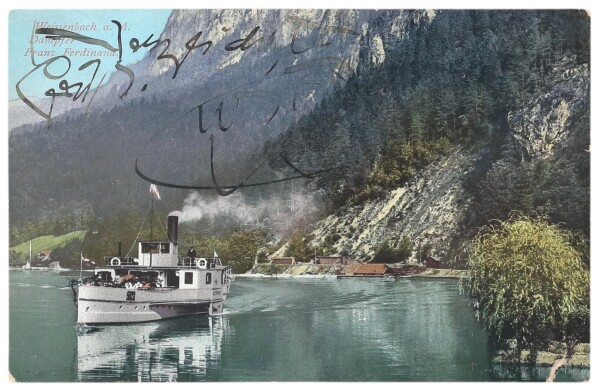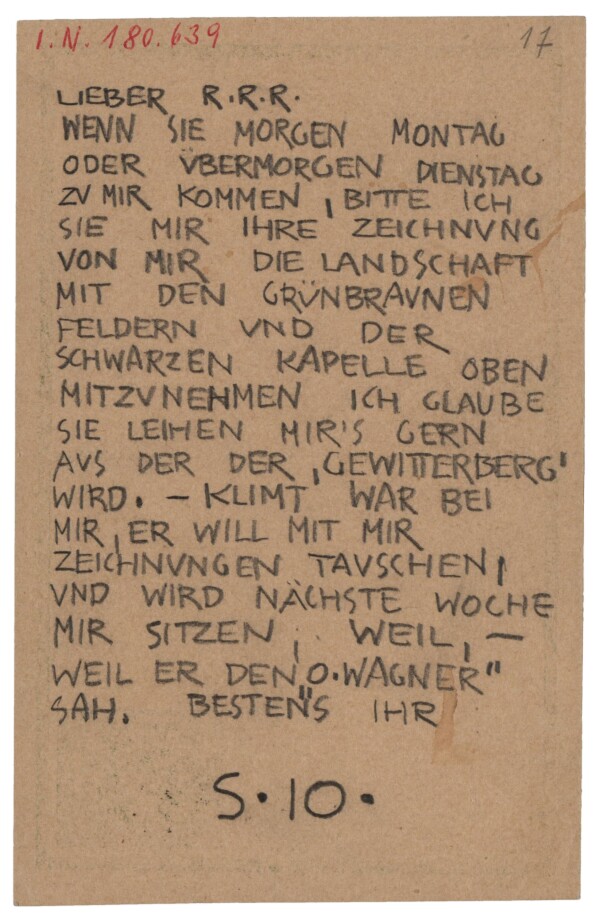 Zur Übersicht
News
Zur Übersicht
News
More than 1,000 autographs relating to Gustav Klimt

Gustav Klimt: Picture Postcard from Gustav Klimt in Kammer on the Attersee to Friedrich Hetzer in Vienna, 09/11/1912, private collection
© Klimt Foundation, Vienna

Egon Schiele: Correspondence Card from Egon Schiele in Vienna to Arthur Roessler in Vienna, 11/27/1910, Wienbibliothek im Rathaus
© Vienna City Library, Manuscript collection
With currently 1,000 letters, postcards, telegrams, files, documents and notes, the autograph section of the Gustav Klimt database is one of the most comprehensive documentation of source material relating to the world artist. Archives and estates are constantly being searched for as yet unknown material on Gustav Klimt. The focus of the research is currently on autographs from the period after the artist's death in 1918, which provide essential insights into the painter's after-effects. Correspondence relating to exhibitions, sales and the estate is also being processed. These provide important information on provenances and Klimt's reception in the period after the First World War.
In addition, this research area naturally contains letters written by the painter himself, in which he personally reports on his work and everyday life: "Work is going slowly - as always". Klimt sent his family "best wishes" from his summer retreat on countless postcards and repeatedly asked Emilie Flöge to cancel their French lesson. Klimt's lamentations about "dreadful rainy days" can also be traced on the basis of a large number of correspondences. A further focus is on documents from third parties that mention Klimt. Here, for example, we read that Egon Schiele regularly exchanged drawings with Klimt and that there were even plans for a portrait of Gustav Klimt by Schiele. We learn from Mäda Primavesi in 1915 that her husband Otto gave her the painting The Hope II (Vision) (1907/08, The Museum of Modern Art, New York) as a surprise for Christmas. A letter from Adele Bloch-Bauer reveals that her portrait had originally been commissioned in 1903 as a gift for her parents' wedding anniversary.
Numerous opinions of Klimt's contemporaries about the artist and his work are also represented. The statements range from positive praise, such as from Hugo von Hoffmansthal: "I liked Klimt's things [...] very much", Erich Lederer: "Klimt was here for a few days last week, it was very funny" and Franz Schreker: "Klimt is a very important artist", to harsh criticism, such as that of Christiane von Thun-Salm: "the "Rose Bernd". That's disgraceful stuff! [...] would be something that the painter Klimt would illustrate well".

